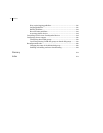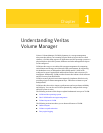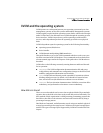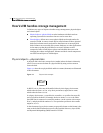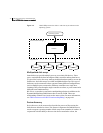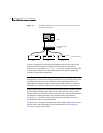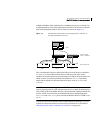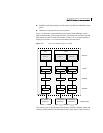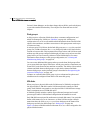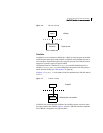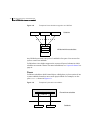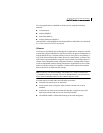
24 Understanding Veritas Volume Manager
How VxVM handles storage management
Figure 1-3 Example configuration for disk enclosures connected via a fibre
channel hub or switch
In such a configuration, enclosure-based naming can be used to refer to each
disk within an enclosure. For example, the device names for the disks in
enclosure enc0 are named enc0_0, enc0_1, and so on. The main benefit of this
scheme is that it allows you to quickly determine where a disk is physically
located in a large SAN configuration.
Note: In many advanced disk arrays, you can use hardware-based storage
management to represent several physical disks as one logical disk device to the
operating system. In such cases, VxVM also sees a single logical disk device
rather than its component disks. For this reason, when reference is made to a
disk within an enclosure, this disk may be either a physical or a logical device.
Another important benefit of enclosure-based naming is that it enables VxVM to
avoid placing redundant copies of data in the same enclosure. This is a good
thing to avoid as each enclosure can be considered to be a separate fault domain.
For example, if a mirrored volume were configured only on the disks in
enclosure enc1, the failure of the cable between the hub and the enclosure
would make the entire volume unavailable.
If required, you can replace the default name that VxVM assigns to an enclosure
with one that is more meaningful to your configuration. See “Renaming an
enclosure” on page 155 for details.
c1
Host
Fibre Channel hub
or switch
Disk enclosures
enc0 enc1 enc2



